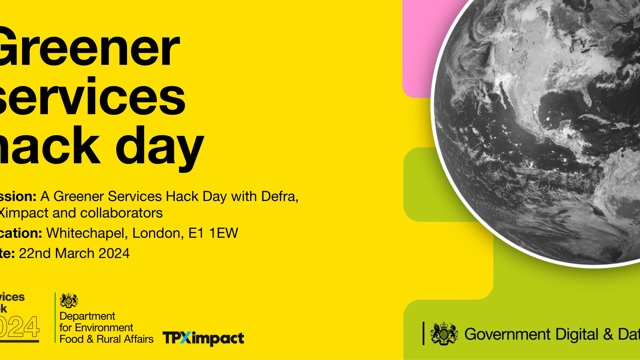We know alternatives to cars are abundant and varied but this challenge for sustainable and accessible transport is about much more than cars and asking people to drive less. If we want to change the way people and communities engage with transport, our focus needs to start with building an alternative solution.
It’s time for us to start thinking about a new model, where new infrastructure and new innovative solutions make green and public transport modes more appealing, more convenient, more affordable and accessible.
Sustainable transport is not always inclusive
At first glance, transport such as trains, buses and bicycles seem like a great option for supporting a move away from cars and the direct impact of individual vehicles on the wider climate conversation. But really, these services often create poor experiences for residents because of:
- route coverage: Bus connections between different areas can be difficult to navigate, requiring multiple transfers and coverage can be particularly poor in low-income towns, rural areas or areas with recent population or job growth
- reliability: Some transport is generally less reliable at certain times of day; rush hour delays add significant time onto journeys which can be a big concern for many workers
- cost: Analysis by the Guardian of a snapshot of five-mile bus trips in local authorities across England found that while a single bus ticket in London costs £1.55, passengers elsewhere often pay more despite for a lesser service, and for long-distance journeys, the cost of rail travel is even more restrictive
- last mile transport: When the distance between home and the closest bus stop or train station is more than 400m, research shows that willingness to use public transport decreases.
- lack of infrastructure: Limited EV charging coverage turns long trips into stressful situations. Limited cycle lanes turn everyday bike rides into risky journeys, not to mention the different office needs for workers wearing suitable clothing by way of changing rooms, showers, etc.
While these barriers are universally felt, they impact social groups differently. People with the economic means can more easily live closer to the city centre or rely on their car to get around. People from lower income households may not be able to afford a home in a well-connected place or own their own car, having to rely on expensive bus services, which further limits opportunities for employment, education and socialising.
Women, people with disabilities and Black, Asian and minority ethnic communities also face disadvantages in different ways that prevent safe, comfortable access to transport. All this limits individual opportunities and people’s sense of empowerment, belonging and freedom.
Promising solutions in tech need to go further
In recent years, there’s been considerable investment in disruptive technology that could transform how cities are designed and managed. From driverless vehicles to on demand transit and automated responses, technology could deliver efficiency and better experiences.
From Uber to Lyft and Lime Scooters to Google, startups and tech companies are creating privately funded products. These range from new ride hailing services, delivery apps, to on demand vehicles. Despite claiming to be disruptive, they rarely address the most pressing issues in transportation:
- rural transport: Most urban innovation focuses on large cities, whereas transportation in rural areas, where the car is often a necessity, is limited
- accessible and affordable solutions: We’ve discussed bus and rail fare, but even bike hire which is often highlighted as a cost-saving solution can cost upwards of £4.50 for a 30-minute cycle ride
- user experience: New services are operated by different and often competing companies in an uneven regulatory environment, resulting in fragmented and disjointed journeys
- environmental impact: Rather than reducing the demand for private vehicles, emerging data shows that ride-hailing has increased congestion and removed the demand for public transportation
Traditional transport planning is slow to change
While privatised tech solutions often fall short of addressing big societal needs, traditional public transport has also been slow to adapt. Some of this delay is due to legacy ways of organising around design, delivery and decision-making. This prevents the necessary experimentation needed to bring data and tech into creating better transport experiences.
- fragmented operations: In many areas, different providers own and operate different routes and systems, with very little data sharing; because of this, local authorities have little influence over an entire transport journey
- lacking resident experiences: Many transport bodies have limited access to community groups and despite holding usage data, don’t know how to get meaningful insights; current procurement guidelines are also largely designed around technical, safety and cost specifications with little room to include resident experience
- limited scope for change: Transport planning and design relies on traditional waterfall methods, designed to mitigate against large risk through upfront business cases and fixed outputs
- constraints in procurement: Traditional routes to procurement fixate on process and cost, rather than sustainability and user outcomes, holding back learning and innovation.
A way forward: leveraging new technology, design, and data under the leadership of the public sector
Neither purely private-driven innovation nor traditional public transport planning is sufficient to wholly rethink transport systems to deliver on the changing needs of people and the urgent climate crisis. In reality, innovation is incremental and requires the stitching together of old and new technologies and systems in a way that is seamless to citizens.
This change will require the public and private sector, operators and local authorities to collaborate and service designers, user researchers and developers who can work with transport planners, economists and mechanical engineers.
These are entirely new ways of working and new partnerships are not easily formed overnight. While the need to experiment with technology and design is often more obviously emphasised, some of the biggest barriers to enabling change are old siloed ways of working. Rather than rely on master plans, we need smaller-scale pilots and experiments that bring diverse thoughts together to explore how new approaches could potentially work in a local context to serve local needs.
It is widely acknowledged that innovation in transport is required to shift people away from 20th-century, carbon-intensive, and outdated modes. However, the conversation on innovation often focuses on design, technology, and end-user behavioural change. An equally important enabler, but often forgotten, is the change in leadership and management required to design, test, and operate new transport systems at scale. Strengthening governance, building strong partnerships and new ways of working are the foundation for change.
Our recent insights

Developing greener services principles with DEFRA
Supporting Department for Environment, Food & Rural Affairs to define shared principles that enable all to embrace planet-centred thinking.
Read more
How local action can transform the UK's path to net zero
Discover the pivotal role of local authorities and communities in the fight against climate change
Read more
Empowering communities: the impact of citizens' assemblies
We spoke to Ellen Jennings, Senior Workstream Coordinator at Barnet Council’s Sustainability Team, about the importance of citizens' assemblies in helping to address the climate emergency.
Read more

